They gather in Hallmark shops after hours and Facebook groups 24/7 to talk about how to carve mountains and make water. Their collections span decades and fill entire rooms. They spend months building displays (and several more months dismantling them), testing circuits, and hiding cords. They are children and retirees, people of all genders, united by their understanding of the joy and magic that comes with building your own tiny world where it’s always the holidays and nothing bad ever happens. They are Department 56 collectors — aka the OG tiny house hunters.
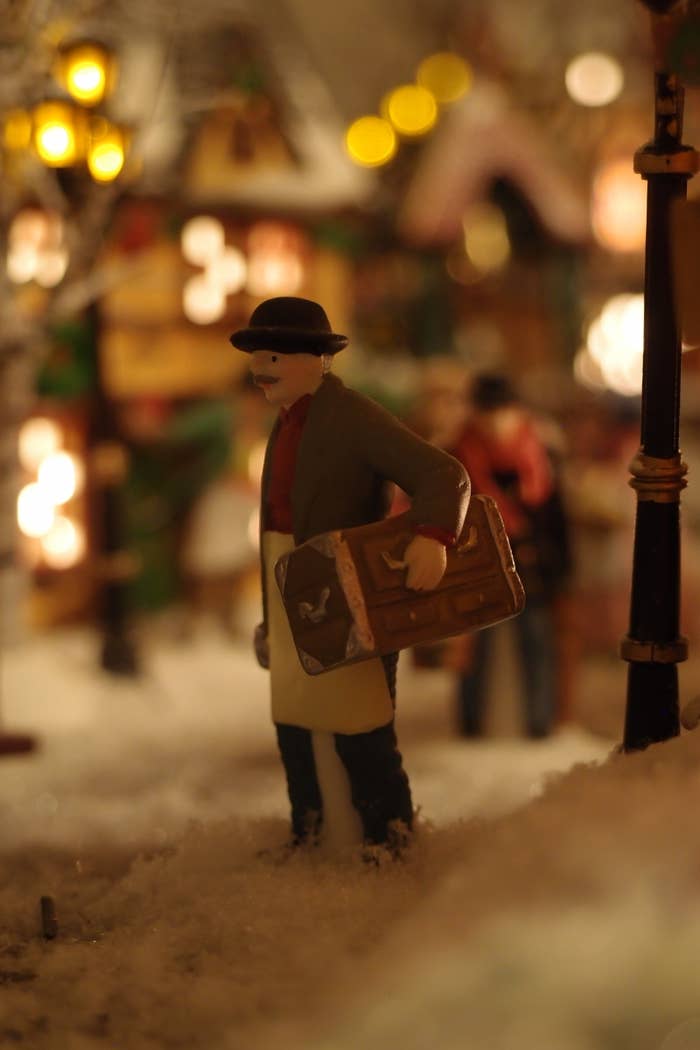
The relationship between Christmas and tiny things goes way back. In the 1700s, people in Poland and parts of central and western Europe incorporated small, handmade buildings into their Christmas decorations, creating what historian Karal Ann Marling calls “a microcosm of the world in which the celebrants lived." In the second half of the 18th century, German members of the Moravian church in Pennsylvania began setting up a “putz” (a decorative scene) around their Christmas trees. In the late 19th and early 20th centuries, Christmas train sets began their steady chug toward icon status and American department stores started transforming their window displays into beautiful doll-sized scenes that delighted both children and adults each December. Walk-through Christmas villages that were just a little smaller than scale — just enough to make visitors feel like they were in a storybook — followed. And in 1976, Bachman's, a retail florist in Minneapolis, launched Department 56, a line of light-up miniature ceramic houses, buildings, and accessories with a nostalgic Christmas theme. (According to the company, Bachman's used a numbering system to identify each of its departments, and the wholesale gift imports division was number 56.)
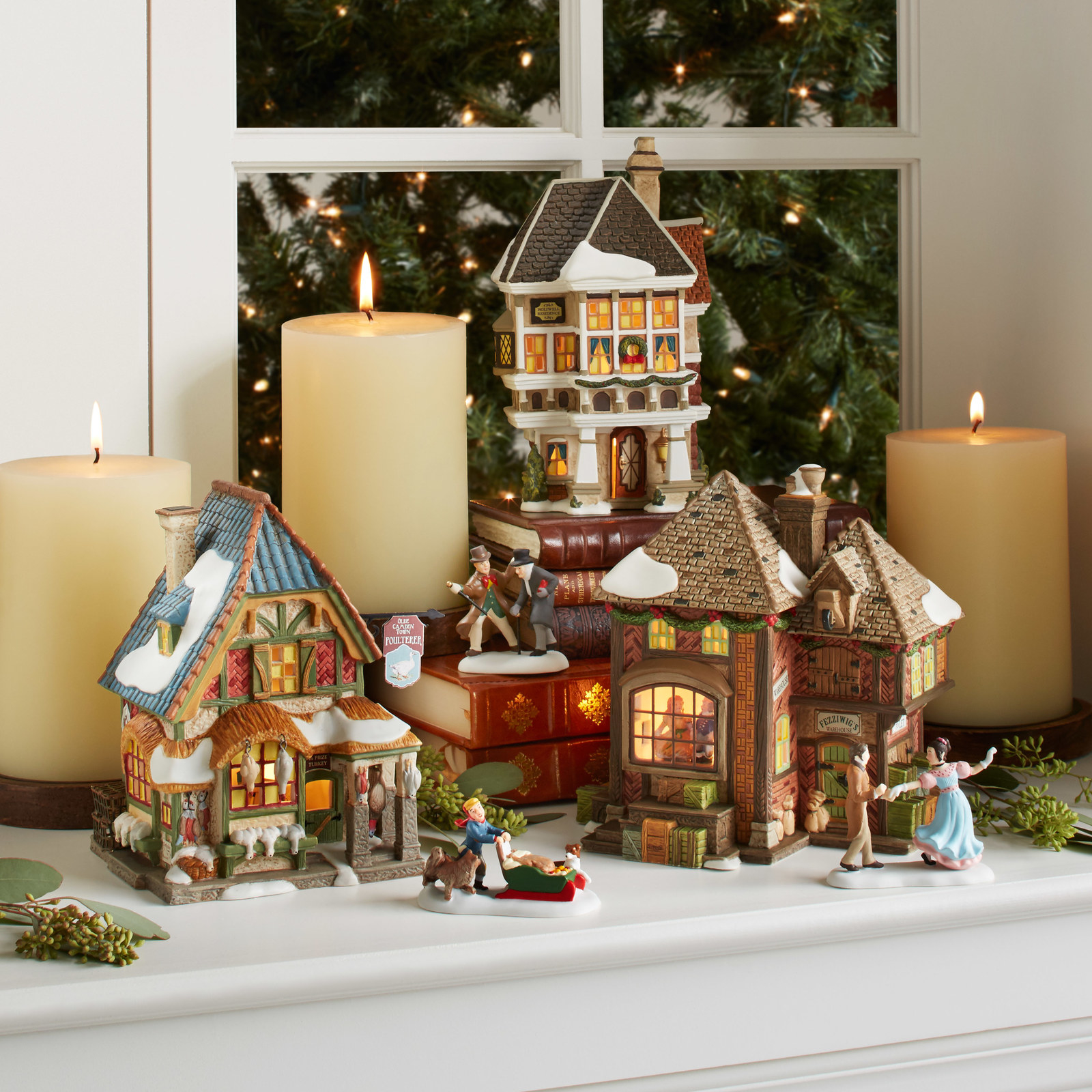
In the years following, the company regularly introduced a handful of new buildings and retired others, turning each set into limited-time-only collectibles. And boy, do people collect them. The company declined to share current sales figures and is no longer publicly traded, but according to Marling, Department 56 brought in $134 million in profit in 1996. And although a company spokesperson said they are no longer doing those kind of numbers, Department 56, the hobby, is still going strong. Along with the classic Snow Village, the company produces several licensed villages, including Disney, The Nightmare Before Christmas, Elf, Margaritaville, Jack Daniel’s, and Harley-Davidson. In August 2017, trade magazine Gifts & Dec ranked Department 56 villages the No. 2 gift of the past 100 years.
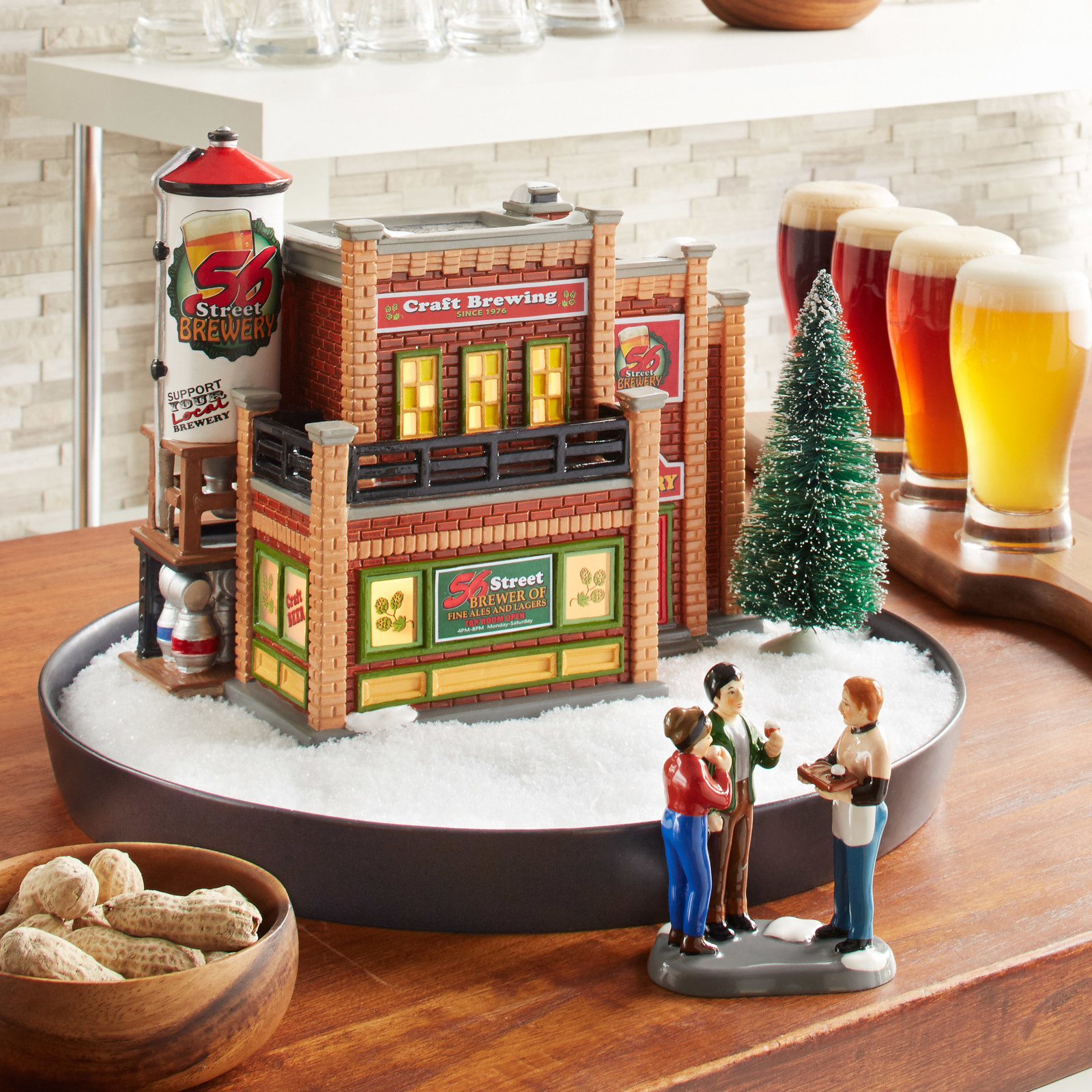
It's also a hobby that crosses gender lines, with a huge active male audience — something that has surprised every single noncollector I’ve told about this story. So much of Christmas is normatively feminine — shopping, cooking, decorating, organizing family gatherings — in a way that can leave some men feeling like they aren’t “allowed” to celebrate it; but, as Marling writes, “greens, lights, and villages add a slight masculine scent to the proceedings. … Jobs involving heavy lifting, electricity, and construction — on however small a scale — have been seen as men’s work.” As far as hobbies (and holiday activities) go, Department 56 is both stereotypically Mom AF and Dad AF, and it's particularly popular with couples.
As far as hobbies (and holiday activities) go, Department 56 is both stereotypically Mom AF and Dad AF, and it's particularly popular with couples.
Going all in with Department 56 isn’t cheap. The buildings — which are hand-sculpted, hand-cast, and hand-painted — range from $45 to $250 each, with most costing around $100. And, of course, a village isn’t comprised of just one house. (That said, the resale market is thriving, and many younger hobbyists start with collections they inherited from older relatives. There are also numerous miniature Christmas villages, at varying price points, made by other companies, and not all collectors limit themselves to just one brand.) Building a village also requires a fair amount of space (as one of my friends put it, “this is a hobby for people with basements”) and time. Most enthusiasts aren’t just setting out a few buildings on Black Friday and calling it a day (though that’s how most people begin); they are creating elaborate tabletop displays with multiple levels and topographic details — and a lot of wires. A big part of what makes Christmas villages so lovely is the beautiful golden glow they emit, and that glow comes from the individual light bulb and power cord that’s inside every building and street light. Even if you only have 10 buildings and five street lights, you’re quickly going to run out of outlets; figuring out how to safely wire the lights and hide all of the cords is a big undertaking.
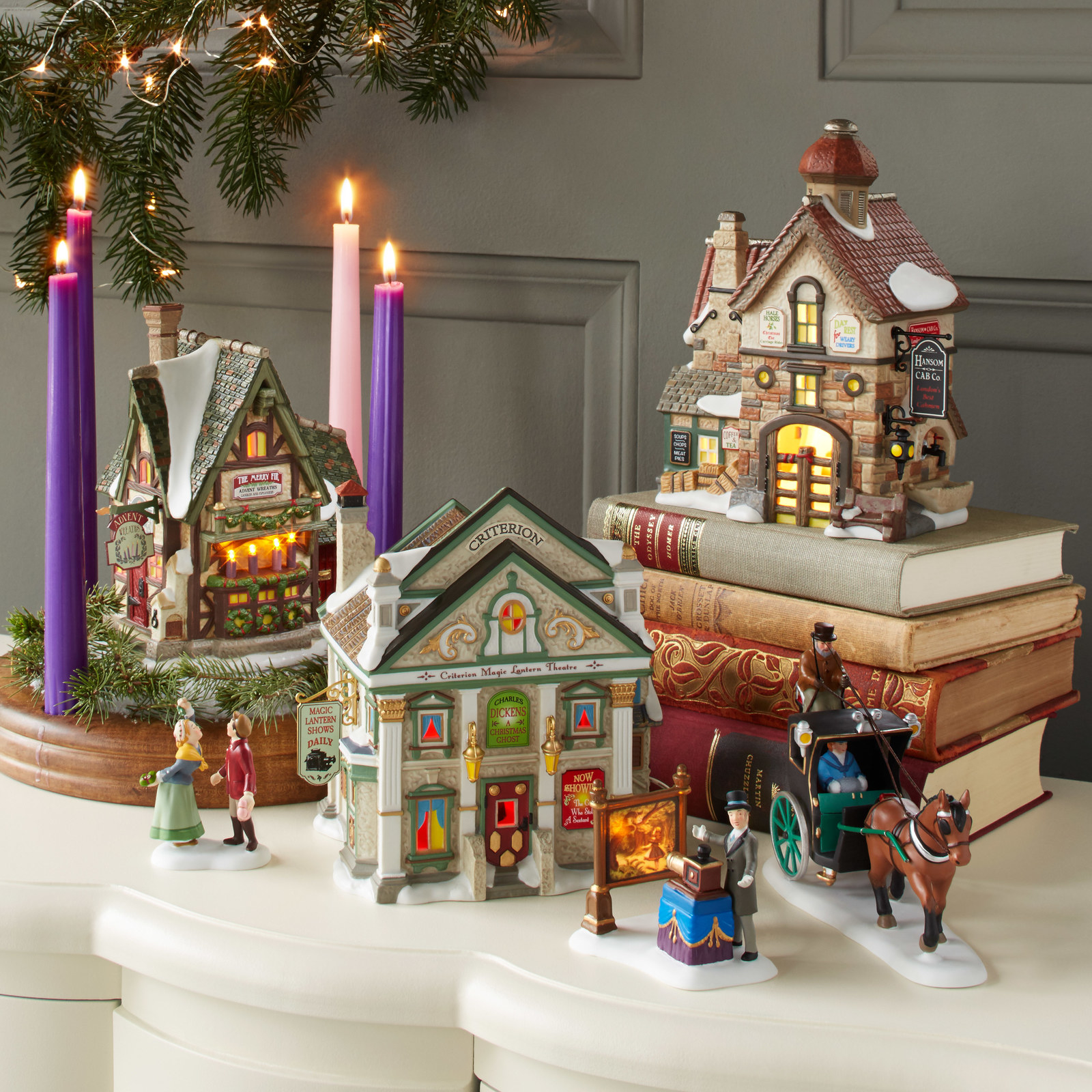
So what, exactly, has motivated people for four decades to spend so much time and money building tiny representations of imaginary Christmases past? Well, as Marling writes, “Christmas is a time when utter perfection seems within human reach: Family members come home again, gifts bring joy to both donor and recipient, and goodwill pours from every lighted window. The imaginary village scene could almost be real. The village lets the collector refashion this world according to his own wishes, remake her memories of the Christmases that should have been.” (I’d be remiss if I didn’t point out that the world they are refashioning will likely be one with no people of color. In the entire 131-page Department 56 winter 2017 catalog, which featured several dozen people figurines, I counted only five POC, and all were black.) All creative hobbies and DIY projects are pretty satisfying, but gazing upon your own beautiful miniature world — where it’s always the holidays! — brings a special kind of next-level pleasure.
I talked to five Department 56 collectors to get to know them and their villages. Here’s what they had to say.
Anna McPherson, 36; Chicago, Illinois
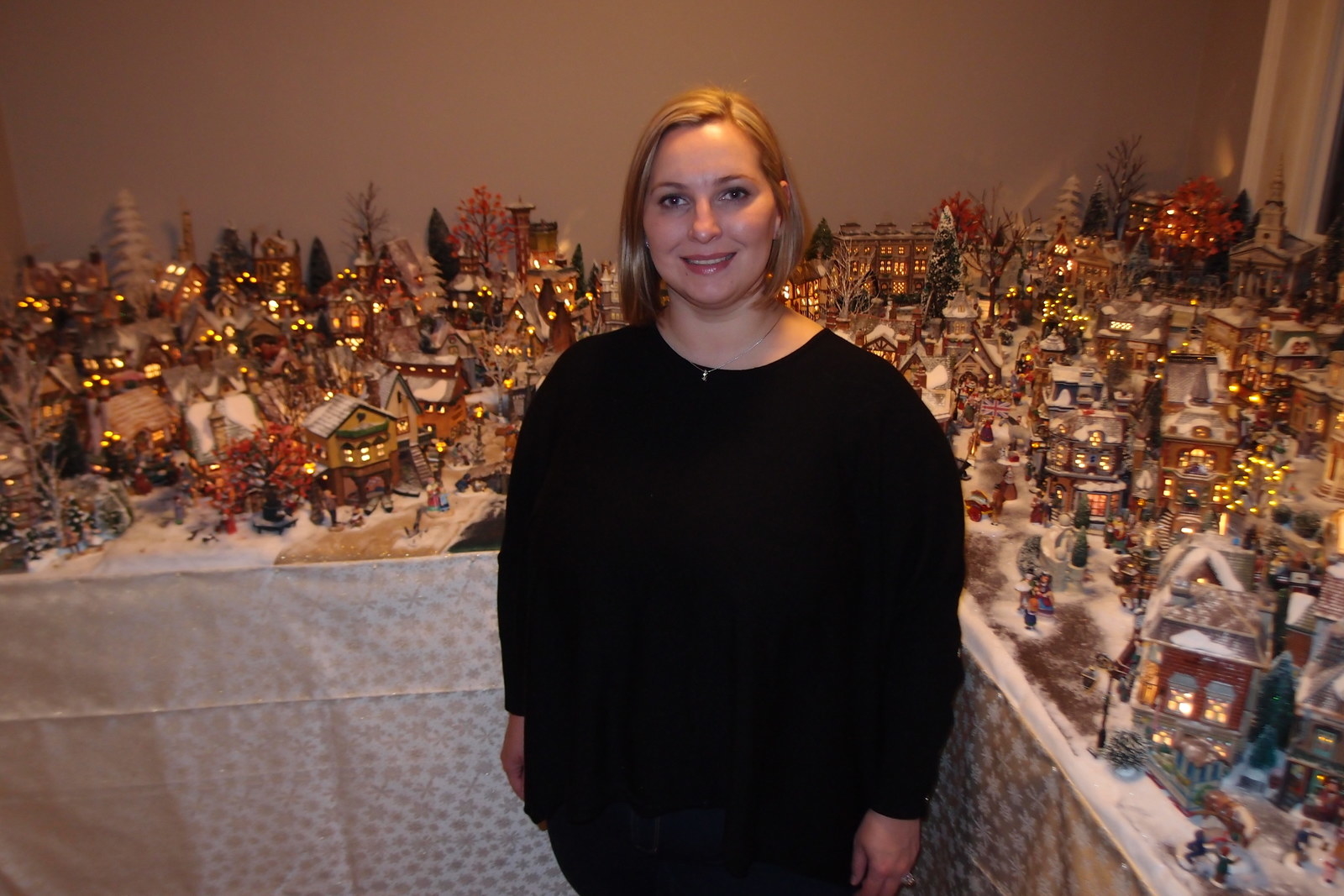
Anna: My love of villaging started when I was 12 or so. I remember the day vividly. My mom took my brother, sister and me for some general Christmas shopping, and by chance, we walked by a cute village display. We ogled over the cute little church and houses, the glow, and we stood mesmerized for probably an hour. In the end we brought home nearly half of it — a whopping four buildings, some people, and a few trees. We unboxed the lot, put out boxes and phone books for a couple layers, covered them with a plain white tablecloth, and proudly set out our very first Lemax village. My job became re-creating this scene each year. We never added to it, but kept the charm and simplicity.
My collection is not the largest, but definitely more than most would consider a village. I have roughly 150 buildings, probably about 550 accessory sets, and countless trees, roads, and streetlights. This year I have displayed 90 buildings that span a city, wharf, an industrial/trades area, and rural cottages on a 4-foot deep platform that makes a wall-to-wall L in our home office — 10 feet by 10 feet, and a shorter, 5-foot segment wrapped into the closet.
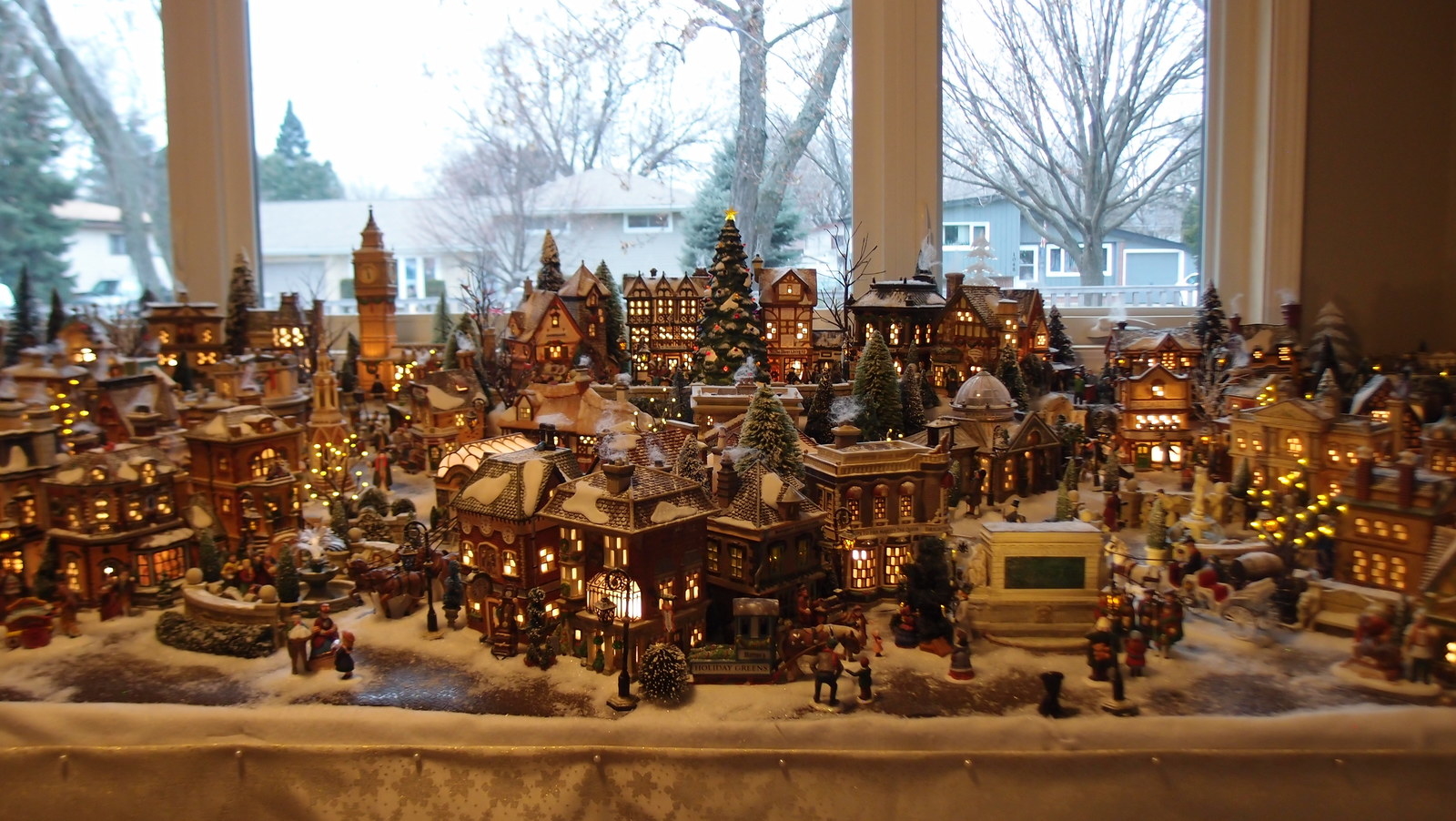
The basic appeal of the village goes back to my love of building, creating, and being a generally crafty person. As I’ve continued collecting, the appeal has become to uphold Mom’s tradition, remember all of the snow-laden winters of the Midwest even after I moved to Arizona and California, and the fantasy of a wonderland where every Christmas is a white Christmas.
"The focus for me is the creative outlet. Some people pay for canvas and paints; I happen to pay for porcelain and glitter."
I love the little details that make everyone’s villages unique, and I love sharing with others to teach and learn new tips and tricks to breathe life into the scenes. A Dutch friend kindly critiqued my square mountains, and I started to modify my technique. I’ve recently started molding and cutting styrofoam — something completely new to me. The buildings now billow smoke from their chimneys.
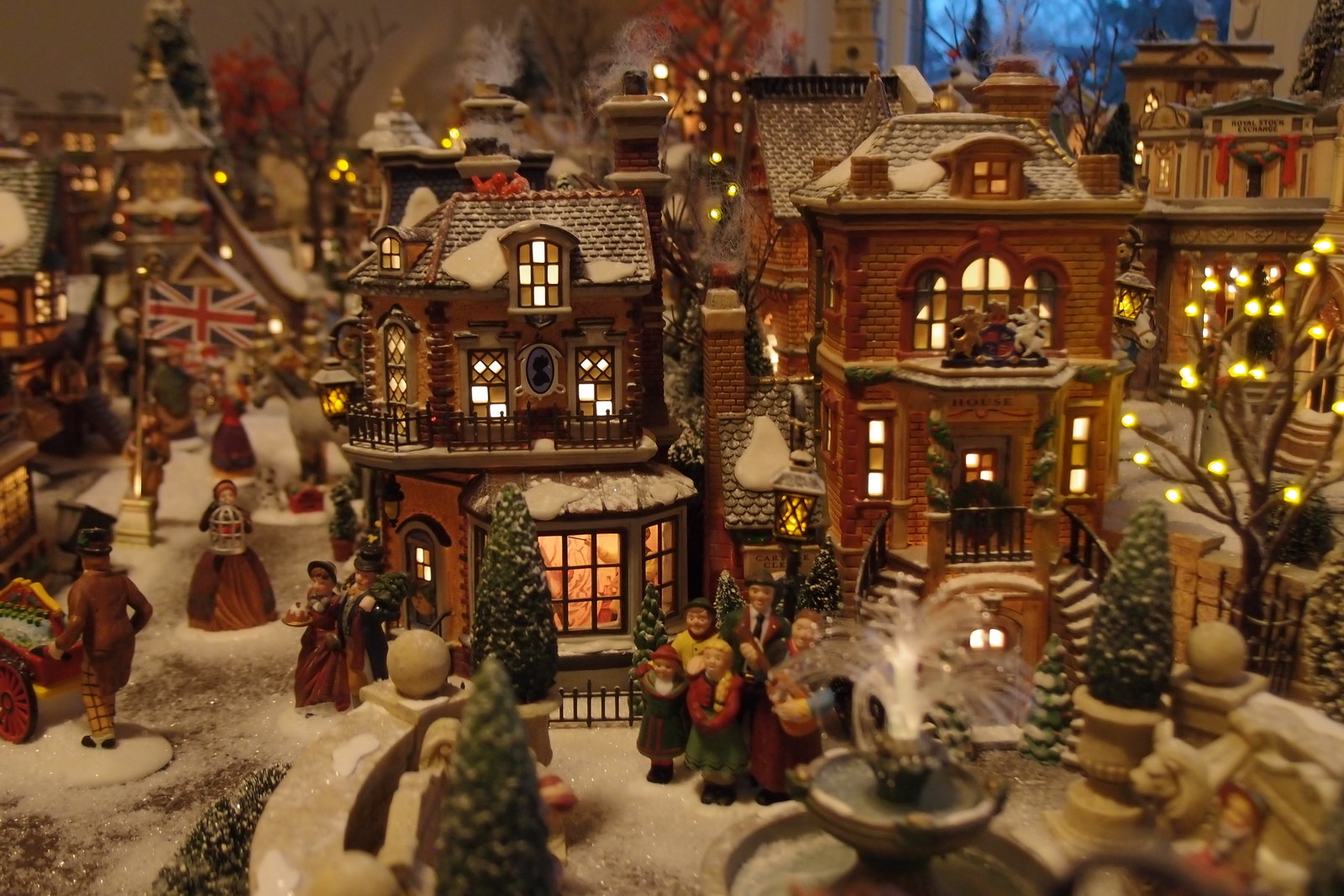
I’m a member of the Ducky 56ers, which is part of the National Council of Department 56 Clubs. We meet monthly to chat about display ideas and charity events, and plan upcoming events. The year culminates with holiday parties and housewalks. This year, the Chicagoland clubs are extra busy planning a 2018 gathering of the NCC, which will be held in September. The weekend will be full of housewalks, seminars, shopping, and mingling with our cross-country friends. Each year the gathering is held in a different city, and supports a host club–chosen charity. Otherwise, I don’t spend much time on the village throughout the year. I have started building only every other year because building the displays can take me several months' worth of weekends and late nights. This year, my display took almost two and a half months. Taking it down will take another.
I’ve long lost count of the money spent on this hobby. I know it’s more than I ever anticipated when I was budgeting to buy those first sets of people years ago. I’ve been very lucky in my finds, and have found some amazing pieces at some amazing prices. The focus for me, though, is the creative outlet. Some people pay for canvas and paints; I happen to pay for porcelain and glitter.
Scott McKevitt, 43, and Nicholas McKevitt, 10; Oyster Bay, New York
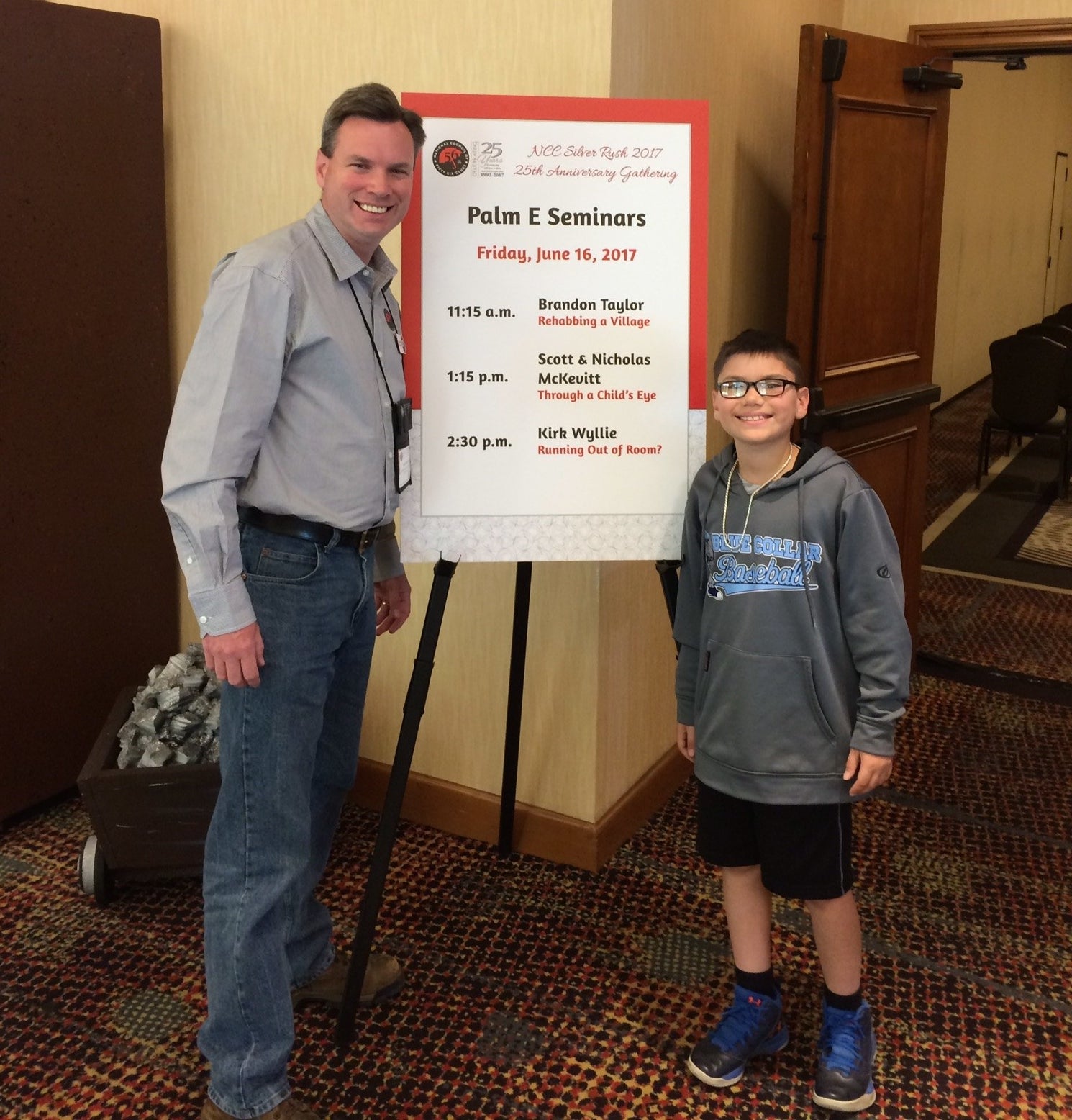
Scott: I’m very fortunate that two blocks from my house here in Oyster Bay is a nursery that carried Department 56. [In 2000] I bought a piece that I gave to my wife as a present. Once you have one house, you need another house, and then another house. She liked looking at it, but had no desire to keep doing it. I guess in the beginning it was simply like a decoration, but I think the thing that keeps me going is how into it my kids are. It’s a nice family tradition.
We currently have around 70 houses. We start by November 1 and the goal is to have it up by Thanksgiving, and then we take them down usually on January 2. When Nicholas was about 5 years old, he took an interest in it, helping me unpack it each year.
Nicholas: So I started liking my dad’s village, and then I found out there’s a Halloween village and my Nana and Pop-pop bought me a few pieces. I got my first house in 2012 and it started growing. I probably get maybe like three a year. We start midway through September and then it's up until Halloween and the day after we take it down. My favorite part about doing it, and why I love doing it, is the finer details. I really love the accessories. There’s a part of my village that’s two levels and that’s really fun.
Scott and Nicholas belong to a local club, and attend the Department 56 collectors national convention. (They’ve been to four national conventions.) In 2017, Nicholas presented an hour-long, 93-slide seminar at the convention, which was held in Arizona.

Scott: Our club meets once a month, the third Thursday of the month. We do a holiday luncheon and a barbecue in the summer at someone’s house. In other parts of the country, it’s very popular to have them in Hallmark stores [after the stores close for the day]. Or each month it might be in a different person’s house.
"There’s no politics! You talk about Christmas all year round!"
Our meeting is a two-hour meeting. We go over what’s new in Department 56, what new buildings are coming out. The main part of the meeting is what they call a program, and one person goes up and demonstrates something — how to carve mountains, how to create water.
In the past few years, Facebook groups have become an increasingly popular way for Department 56 collectors to connect with each other.
Scott: People are constantly posting. A lot of people may not be near a collectors club. People will just go on and just ask a question, and within minutes [get answers]. Best of all, there’s no politics! You talk about Christmas all year round!
Dennis Vaughter, Sr.; Burton, Michigan

Dennis: My wife and I started collecting Snow Village around 1980. In our travels we saw some of the pieces and they reminded us of our hometowns and where we grew up; some buildings even had the same names as some places in our hometowns. These houses and people were like little cities. We liked Department 56 best and started collecting a few pieces to set up at Christmas. Members of the family — cousins and other relatives — started giving us different pieces as gifts and our collection began to grow. It got to the point where we could expect to receive a few pieces as Christmas gifts as the years went by. Eventually our collection grew to the point where we needed more space for displays.
We have an enclosed porch which was turned into a heated sunroom. It occurred to me to build a shelf around the whole room. Snow Village was then set up on this shelf going all the way around the room. It is a great city going all the way around the porch. I can leave this city set up on a permanent basis. One of the things that I like about my display is that it is up high enough to be viewed without being close enough for people to touch or handle any of the pieces. I have it tied to the electric switch on the wall. A flip of the switch lights the whole city.
"I lost my wife several years ago, but continue to enjoy this set-up and showing it to those who visit my home."
Currently this city consists of 45 houses, complete with cars, people, and all the things found in a small community. People who visit my home are fascinated when they see this large city lit up. Many get their phones out to take pictures. The total size of the city going around the wall is approximately 100 feet in length. I estimate that I have a few thousand dollars invested due to the length of time the houses have been there; many are retired, which increases the value.
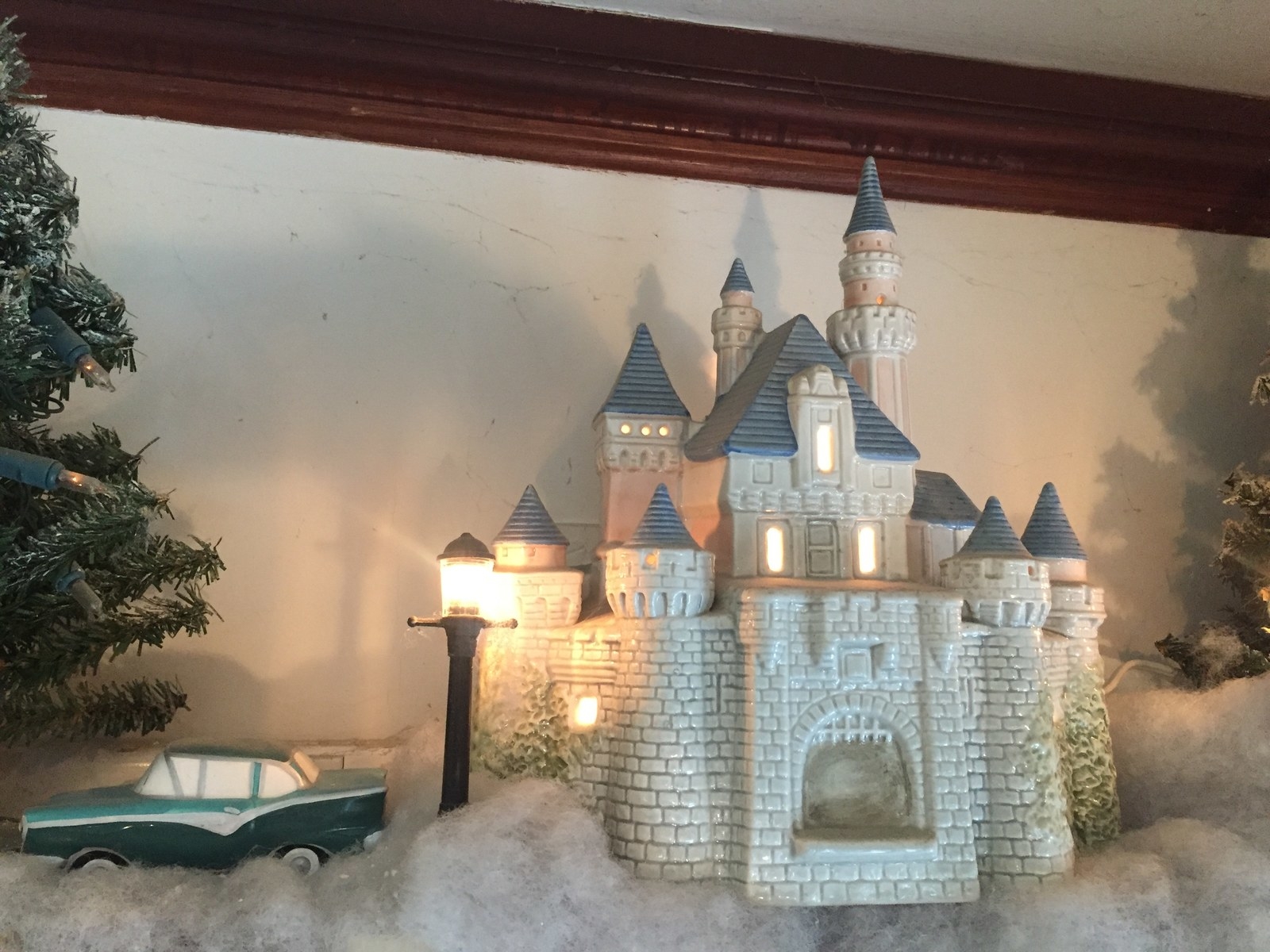
I lost my wife several years ago, but continue to enjoy this set-up and showing it to those who visit my home.
Blake Smith, 29; Shawnee, Kansas

Blake: We started collecting last year when my partner’s mother, Dorothy, gave us her collection of about 30 buildings that she had been collecting for years. Christmas has always been one of my favorite holidays, and when we started, it was shortly after the passing of our pets. We really didn’t plan to decorate for Christmas until Dorothy gave us her village in the hope of cheering us up, and it did — but it also started a mission to collect it all one day.

The village, as of today, is over 100 square feet and 4 feet tall at the highest point. We currently have 60 lighted buildings, 10 animated pieces, 100-plus accessories/people, and 200-plus trees. My favorite pieces would have to be the Christmas vacation set we started collecting this summer. Last year the village was displayed upstairs in our dining room, but with its growth this year it’s moved to the finished basement. I hand-carved each section of the mountain, plastered it, and painted it. As far as storage, the village lives in 18 55-gallon totes when not on display.
"We really didn’t plan to decorate for Christmas until Dorothy gave us her village in the hope of cheering us up, and it did."
We do a majority of our shopping on eBay. I am also in four Department 56 groups on Facebook that I’ve gotten some pieces from as well. We try to add a few new pieces every few weeks or months. Between inheriting and purchasing I would say the value of our collection is between $8,000 and $10,000.
I started this build in July, trying to step it up from last year’s display. On average I spend 8–10 hours a week building and decorating the village. I’ve done most of the display building myself, with some help from my partner Patrick. This year his nieces will be adding the final snowfall for the village. ❄️
Do you collect Department 56 or other miniature Christmas villages? Share your photos and why you love it in the comments below!
